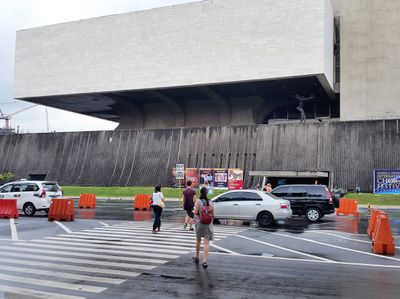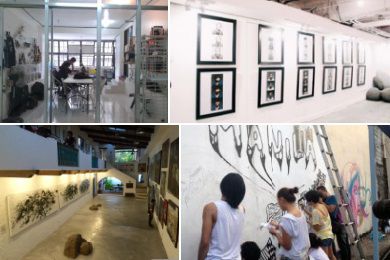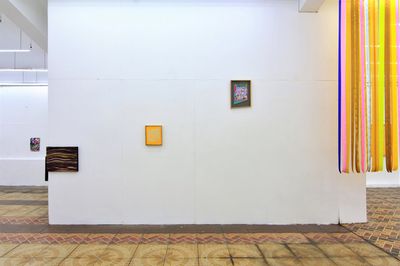Off-site as Site of Access: Structuring Exhibitions Outside the Museum

The worldwide crises have changed the ways art institutions operate within their respective localities while maintaining relations globally. This article looks into the kind of interconnectedness that arises from an era of unprecedented disruptions. How do we reimagine new forms of continuity despite all the physical restrictions? This inquiry is addressed by assessing two recent exhibitions at the Museum of Contemporary Art and Design in Manila, Philippines.
Editorial note: The author served as a member of the curatorial team for the Museum of Contemporary Art and Design in Manila for “Watch and Chill” and “MCAD Commons: Artists’ Film International 2021” which are points of focus of this article.
The Museum of Contemporary Art and Design (MCAD), Manila, in the Philippines has concluded 2021 with a series of exhibitions outside its main gallery. A non-profit and collection-less museum associated with an art and design college, MCAD has dealt with large scale works both by local and foreign artists to show in its high-ceilinged venue that is solely dedicated to exhibitions.
One aspect of museums is creating spaces wherein the built structure influences its infrastructure, an internal system that allows it to function. This premise of a space changes when exhibitions are delivered off-site. MCAD’s curatorial staff, led by its director and curator Joselina Cruz has acknowledged and responded to these challenges through collaboration with particular communities in the locality and art institutions in the region and other parts of the world.
Emptying the Museum, Expanding the Exhibitions
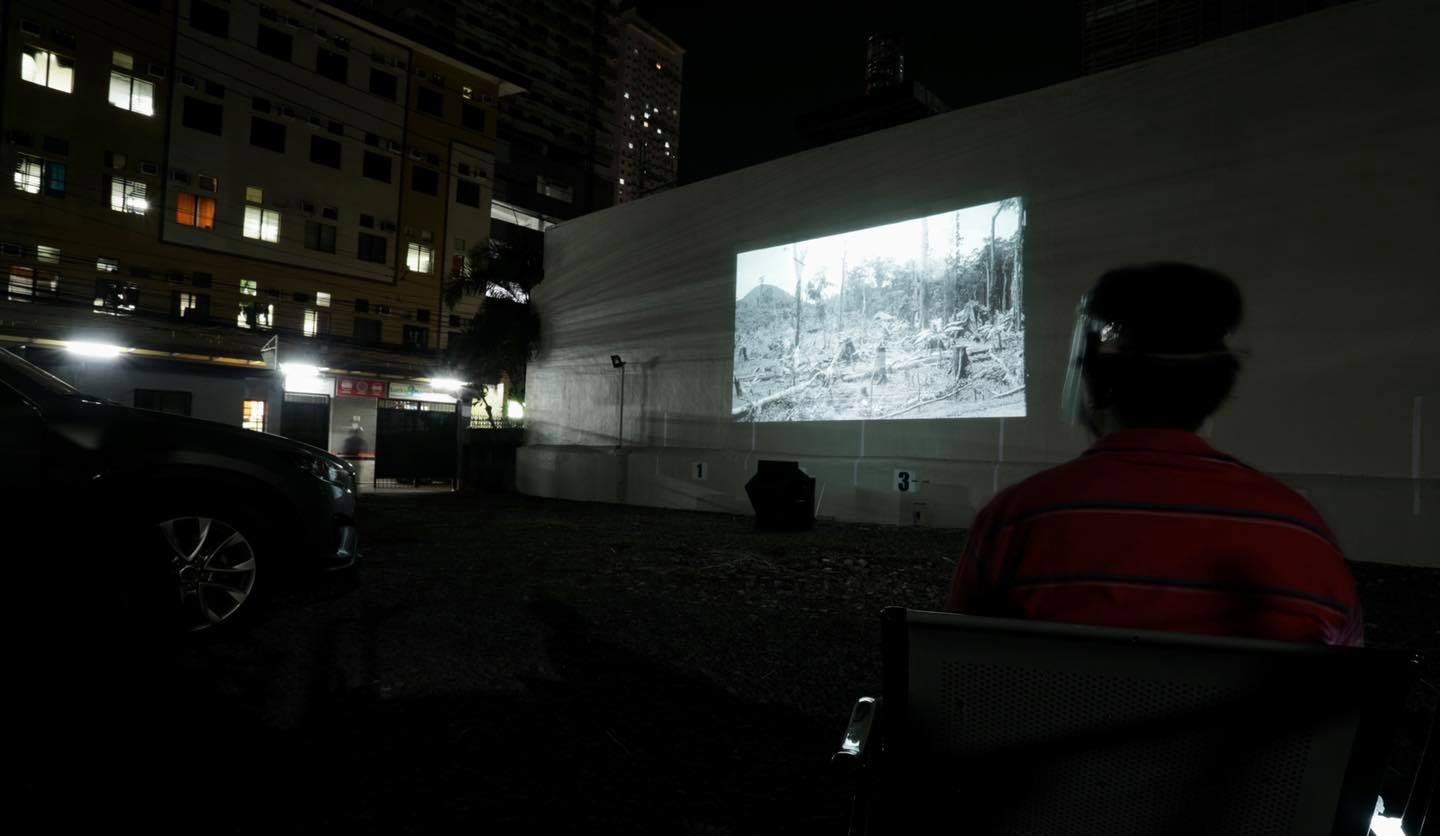
MCAD's drive-in theater for Watch and Chill; Image courtesy of Facebook/MCADManila
The post-modern notion of an empty museum is perhaps more apparent and relevant especially in this period of contactless interaction. With no permanent collection, MCAD considers exhibitions as flexible, ever-changing and never static, substantiating its integrity as a contemporary art space. In the efforts of expanding the experience of art, MCAD has long before explored exhibition-making removed from its original site.
Screening video works on different dates and in various formats, “Watch and Chill” (October to December 2021) is a collaboration among art institutions in Asia: The National Museum of Modern and Contemporary Art, Korea in Seoul, the M+ West Kowloon Cultural District in Hong Kong, and MAIIAM Contemporary Art Museum in Chiang Mai, and MCAD in Manila.
Initially planned as a drive-in theater inside the museum, a proposal by MCAD’s exhibitions head Ian Carlo Jaucian, the format developed into an outdoor presentation at an open ground car park. The preparation involved a few retouches on the wall for the projection, painting of a screen, set-up of benches, and most importantly testing of equipment— a short-throw projector placed inside a waterproof casing, and a transmitter converting the audio into radio signal to be paired with the car stereo or streamed using a built-in phone radio.
The curated sections “By the Other Being,” “Things in my Living Room,” “Community of Houses,” and “Meta-Home” include the works of Filipino artists Shireen Seno, Mark Salvatus, and Cocoy Lumbao, as well as videos and moving image by Cao Fei, Cha Jaemin , Chai Siris, Cici Wu, Kawita Vatanajyankur, Koo Donghee, and Yuan Goang-ming, to name a few.
In an interview, Lumbao shares that “During open space screenings the projection becomes part of the environment. What I am experiencing while I was watching in MCAD’s car park was already a composite of everything that was happening within my radius—on the streets, the apartments across it, the buildings around me, and the cacophony of sounds that seem to meld with the images shown.”[VR1]
“The way we experience artworks today, this kind of open space or public screening provides a rare chance to see how a certain artistic vision or work fares against the actual environment or community where it is shown. It is a good opportunity to juxtapose art with actuality,” he continues.
The expansion of exhibitions to off-site spaces creates an environment that may result to affective responses if not personal and nostalgic experiences of watching video works or films on a big screen, offering a sense of normalcy.
“[T]his outdoor screening setup was entirely unique and liberating— a rare chance for all of us parents to watch anything together and with other children. This would not be possible at all indoors in either a cinema or museum setting, for safety reasons during the pandemic,” says Seno who attended one of the screenings with her family.
She adds that it is through the collaborative project that her work is circulated “in new settings and in novel ways” despite the challenges in movement.
Reconstructing exhibitions may be viewed as a gesture of sustaining aesthetic and artistic exchanges, while continuously sharing strong affinities among the various publics; to rethink and reformat exhibitions entail innovative and creative platforms for the circulation and distribution of art.
Reconfiguring and Assessing Access
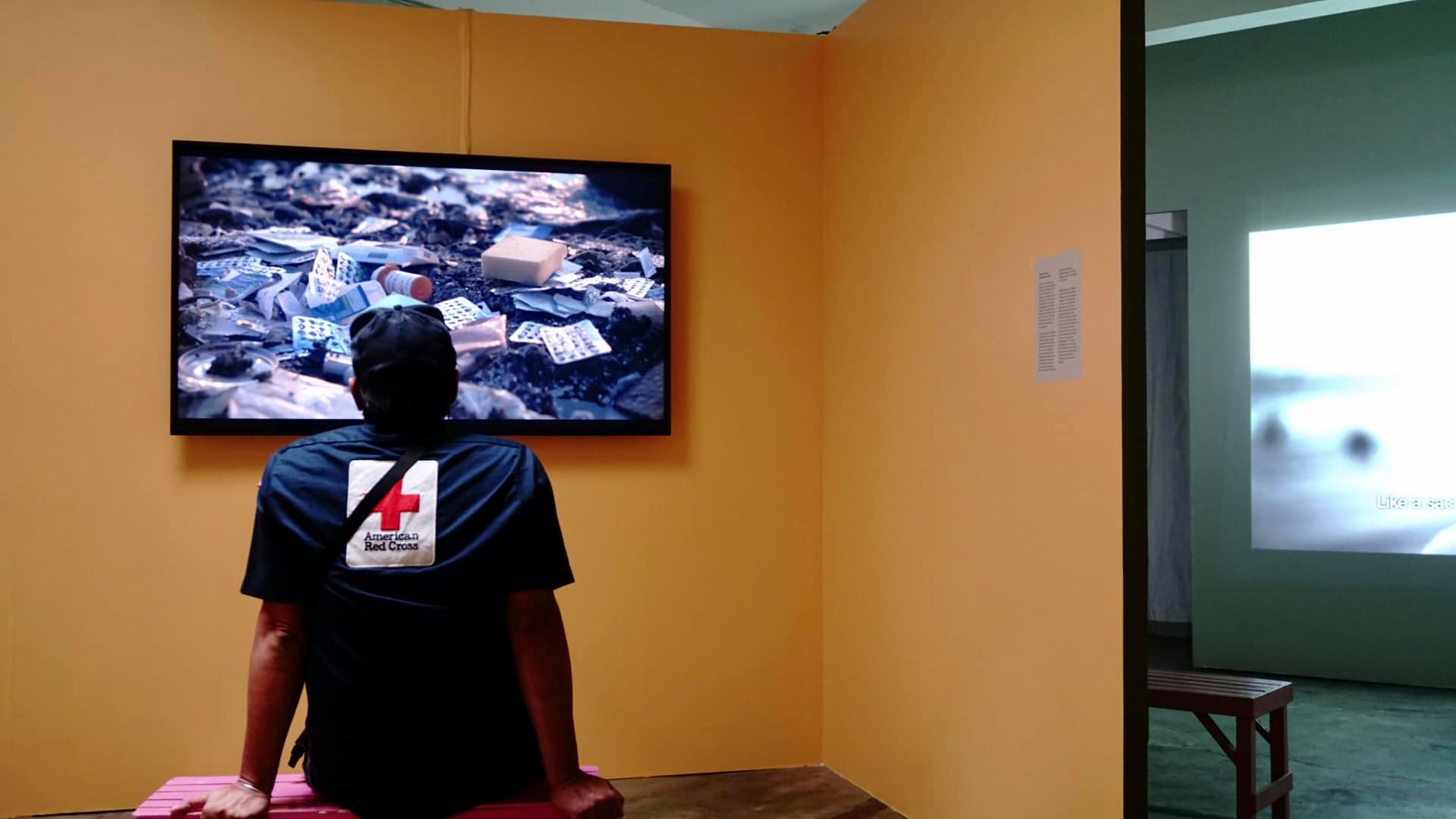
MCAD Commons: AFI Care on-site video installation in Lucban, Quezon; Image courtesy of Facebook/MCADManila
In the same year, programmes and museum activities have expanded to two more locations for the simultaneous presentations of “MCAD Commons: Artists’ Film International” (October to December 2021). There have been screenings at Sine Pop in Cubao, a boutique cinema, and an on-site video installation at Project Space Pilipinas (PSP), an artist-run space in Lucban, Quezon.
Artists’ Film International (AFI), an initiative project of Whitechapel Gallery, gathers video works from the collection of more than 20 partner institutions around the globe. Touching on the theme “care”, AFI 2021 features the work of Filipina artist Kiri Dalena who has been selected to participate in Documenta 15.
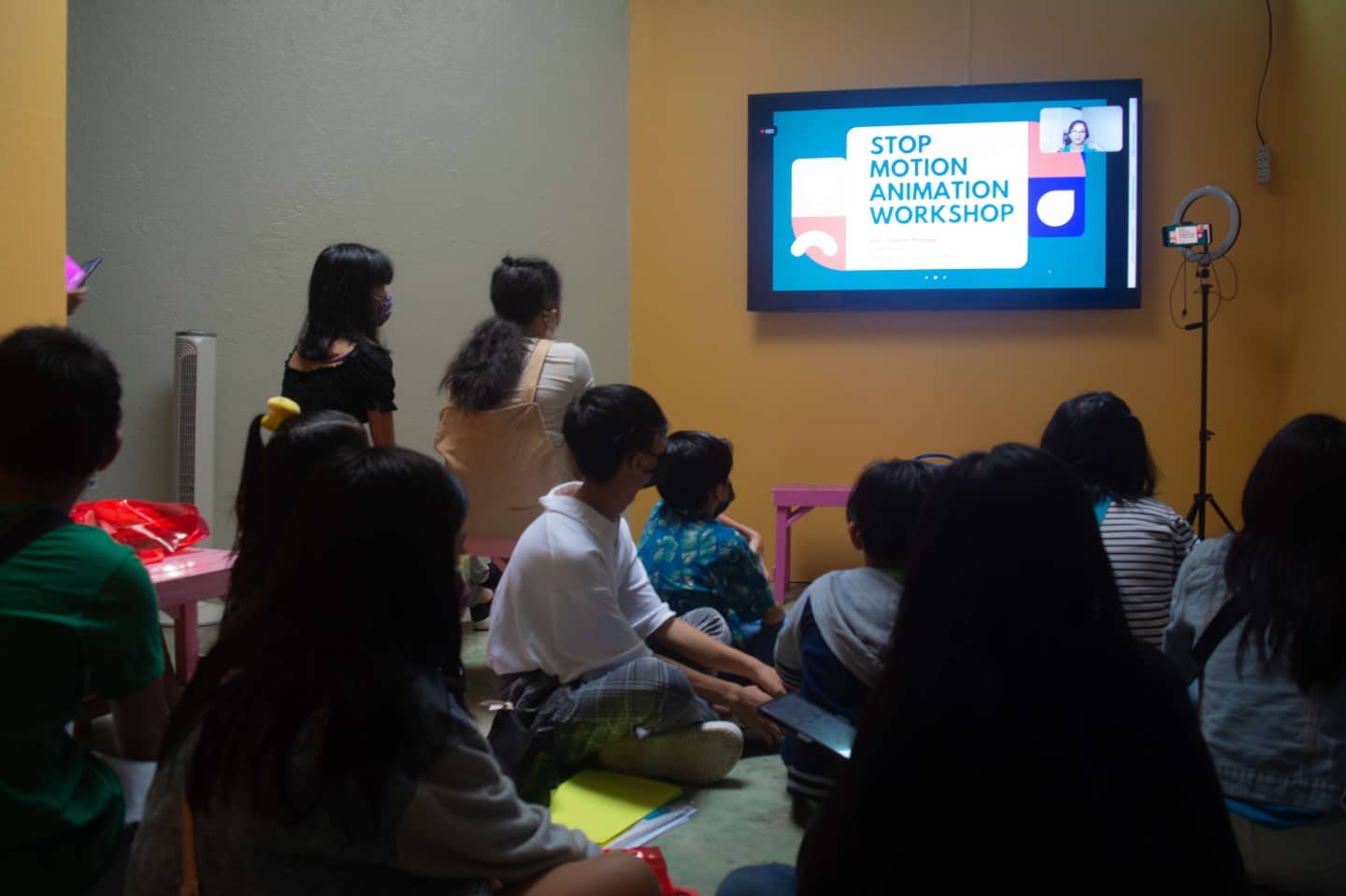
Collage animation workshop as part of the public program for MCAD Commons: AFI Care; Image courtesy of Facebook/ProjectSpacePilipinas
From build, installation, tours, to facilitating the animation workshop for children virtually, the on-site iteration in Quezon, which is a 4-hour travel from Manila, has been made possible with the collective support of the community in Lucban, led by PSP founder and visual artist Leslie de Chavez.
“What we need to again realize with this collaboration between MCAD and PSP, is the significance of having an art and cultural space (be it public or independent) in communities like Lucban. Such art collaborations give an opportunity not only for the institutions to broaden their audience and extend the narratives of art but also for the communities to expand their knowledge and understanding of art,” explains de Chavez when asked about the importance of engaging and forming a community through the arts.
“[T]he impact of the arts’ presence in their lives will only manifest later in the future. But it is in this kind of “grassroots” long-term approach that we will be able to develop a more sophisticated and intelligent audience (and even artists) that will greatly leverage our future artistic endeavors,” he adds.
Reconfiguring access means providing the public multiple entry points not only to the physical site, but also access to programmes that could potentially serve as stimuli for knowledge production and idea generation. Engaging with a larger audience may be achievable by looking inward while creating a discourse that may either be specific to a locality or which outward trajectories may be directed towards a broader conversation about art in the international scene.
“Art alone despite its plurality has several limitations, and these limitations are as significant as art itself. If you are aiming to affect a more profound and lasting impact on your audience, one should not just settle on the muted exchange that happens between the viewers and the artwork inside the space or exhibition. There have to be sensible programming, methodologies, and mechanisms, designed to generously bridge access of ‘what art is’ to the community,” says de Chavez.
Both exhibitions have become possible and fully realized through collaboration rather than purely negotiation, and moreover, through inclusion instead of intrusion alone of an institutional framework in the chosen off-site venues, of course with great consideration to the existing dynamism and energies that characterize these spaces beyond the infrastructures of macro institutions.
About the Author
James Luigi Tana is a writer, cultural worker, and independent curator from the Philippines. He is currently finishing his master’s degree in Art Studies-Curatorial Studies at the University of the Philippines in Diliman. He is a faculty at the Philippine Women’s University School of Fine Arts and DLS-College of Saint Benilde School of Design and Arts. He served as a member of the curatorial staff for the Museum of Contemporary Art and Design in Manila for “do it” (Manila) (2021), “Watch and Chill” (2021), “MCAD Commons: Artist’s Film International: Care” (2021), “Haegue Yang: The Cone of Concern” (2020), and “Constructions of Truths” (2019). He participated as a researcher-curator for co.iki’s remote residency programme “Memory and Memoricide of the Land: Reimagining Alternative Model of Museum” in 2021. In the same year, he served as assistant curator for the Manila iteration of “Korea Research Fellow: 10x10”.
Tana wrote commissioned articles for Asia-Europe Foundation (2020-2021). He contributed to InTheMuseum, a newsletter sponsored by the Centre of Doctoral Studies at King’s College London “which explores engaging with art and museums in a pandemic.” He won the Ateneo Art Gallery-Kalaw Ledesma Foundation Inc. Essay Writing Prize for the non-student category (2020).
[VR1]This para can be put in quotes “” in the post
Similar content
posted on
posted on
posted on
posted on
posted on
posted on

